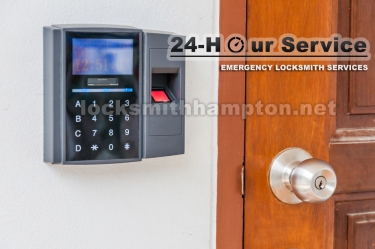There are many doors out there, and those doors all have different lock sets. Mastering the ins and outs of one type is not enough to get through all of them. Fortunately, there are full time locksmiths that are prepared for every kind that there is to be found in Hampton, Virginia. Generally, locks are classified by the average person according to how they appear on the outside, though what really counts is on the inside. Why the overwhelming multiplicity of permutations? There are different jobs that require diverse ranges of mechanical abilities. The lock and key industry has been evolving for centuries and continues to advance at incredible speed.
Pin Tumbler
The most commonly encountered sort of lock is called a pin tumbler. It is arguably the simplest design. These are found in front doors of garden variety homes. It works by using the teeth of the key as a decoder for the individual sequence of pins that lie in the center of the lock. They come in two types, cylinder and tubular. The cylinder lock has a straight forward line of pins the jut inward while the tubular lock has the pins set in a ring along the inner walls. Pin locks are some the oldest and easily passable.
Wafer Tumbler Lock
Relying on nearly the same principle, the wafer tumbler lock takes a more advanced turn. Flat “wafers” are used instead of traditional pins. They are spring loaded and protrude from both the top and bottom of the cylinder. Keys that are cut on both sides constitute a code that is twice as hard to crack. This added complexity makes lock picking that much more difficult to open in the normal way. In lieu of a pick set, lock pickers use sets of “jiggers”, these are large sets of pre-fabricated keys of varying designs that are used in quick succession. Jiggers are casted with the most prominent code combinations and are utilized in a guess-and-check fashion.
Disc Tumbler Lock
Still even more improvement of the tumbler design was made with the coming of the disc tumbler lock. They are comprised of slotted, rotating disks instead of pins or wafers. As opposed to the straight forward layout of the former two, the disk tumbler taps into the third dimension for added security. The teeth of a key reach the slots in the disks from several angles and must fit perfectly, this is what makes them harder to pick. Disc tumblers do not require springs and so are fit for freezing, spring prohibitive environments.
Lever Tumblers
Lever tumblers use the principal of tumbling in a slightly different manner. They have stacked flat plates that act as the pins. Each plate must be moved into a correct position before the next can be set. Each mobile lever serves to protect the one ahead and behind which are usually of separate shape and size, creating an overlapping security design. The more levels that are added, the more security provided. For breaking and entering purposes, thieves will drill through the face plate of the lock to manually deconstruct the whole mechanism rather than deal with pick proof safeguards. Locksmith Hampton in Hampton, Virginia is a local company capable of preventing such surprises.
Locks encountered so far have all only relied on mechanical-physical attributes to accomplish the task. Since the turn of the last century there have been great headways made in the form of electronic lock sets. Instead of a conventional metal key, they employ digital ones. To demonstrate the effectiveness of these new means, consider the instance in 2016 where the United States Federal Bureau of Investigation was baffled for weeks by the digital encryption that can be found on all Apple smartphones.
Magnetic Key Card
The most readily available have been around long enough to have been encountered. Modern hotels employ the magnetic key card method. The automatic locking mechanism is triggered to open and shut by electronic signals that are dispersed by the unit control module. The key in these cases, resembles a credit card. The magnetic strip on the back of the card is encoded with a long series of numbers and characters that the lock’s card reader checks. Their inherent vulnerability is that the code can be hacked using a number of devices in the thieves tool box. A code generator engine can be (wired or wirelessly) linked into the unit’s system and instantly try out every possible combination of characters to trigger the unlocking sequence.
Smart Locks
The next level up is the smart lock with accompanying cryptographic key. This type of electro-mechanical set includes no solid key as well. What sets them apart is that the code is changed frequently so that even if the sequence were compromised at some point, it would soon reset and render the forged code useless. Smart locks are compatible with many smart phones which have applications (apps) available for download. The phone can either bounce the signal off a satellite from anywhere in the world to accommodate entry or it can tap into the local Wi-Fi network to do the same thing. This feature is regrettably a two way street; if the owner can gain access remotely then so can hackers. To combat this, developers are refining ways to get around blind access with biometrics. That is using the defined measurements of your body parts as keys to be read by the computer’s scanners.
When selecting which lock is right for personal or professional needs, the experience of real locksmiths such as Locksmith Hampton in Hampton, Virginia is invaluable. More often than not, it comes down to a compromise between budget and desired level of security. Just keep in mind that you can’t put a price tag on the security of your property and belongings. Locks in one form or another are mandatory. Talk with a lock and security provider to learn about other options.
Article source here: Types of Locks and Keys


No comments:
Post a Comment